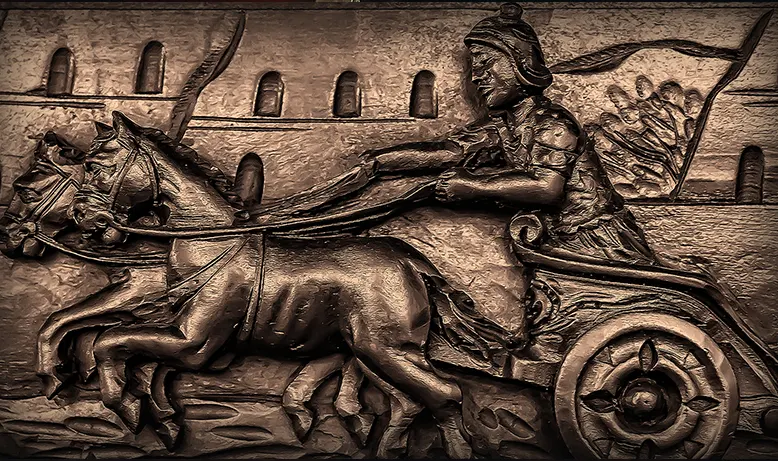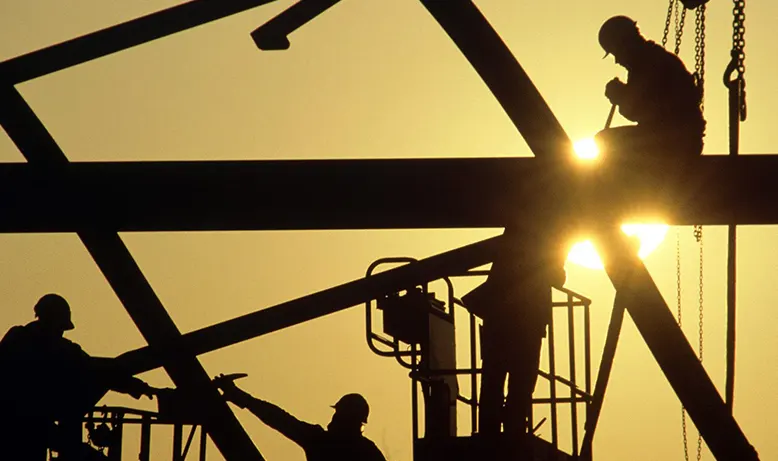SteelArchives
Metallurgy
31/01/2022
The origins of metallurgy | SteelArchives
Bronze Age, Iron Age... Metal entered the history of mankind a very long time ago. A decisive but discreet entry: at the time, only a few metals were known. Nevertheless, with them, metallurgy began.



What is metallurgy?
Metallurgy is the set of techniques used to extract and process metals from their ore. From its very beginnings, metallurgy has transformed human life. Thanks to it, humanity entered a new era. The stone age is over, and from now on, people will make more sophisticated objects.So metallurgy is a revolution?
Yes, first of all, this new technique generated important commercial exchanges: the first metallic objects circulated from the East to the West. More importantly, metallurgy is proof that man is capable of changing matter: metal, I remind you, is first and foremost an ore. The blacksmith is, moreover, considered to be a sorcerer. He masters fire, he transforms a simple stone into a sharp blade. He is a highly respected figure who has become a legend. Even today, many people have a name that evokes the blacksmith: Fabre, Lefèvre, Fabbro, Favre, Schmidt, Smith.
Vulcan or Hephaestus?
Don't worry, it's the same character. Vulcan, in Roman mythology, succeeded Hephaestus and is the god of fire and metals. Son of Zeus and Hera, he is a skilled blacksmith: he makes the thunderbolts of Zeus and the weapons of the gods and heroes. He works in an underground forge where the Cyclops help him. The clatter of their anvils can be heard deep in the Sicilian volcanoes and the fire of their forge glows on the summit of Mount Etna.When was metal first used?
Probably 10,000 years ago. First, people used native metals. Like gold, copper which they cold hammered to make jewellery, pins, punches, mainly. In short, precious objects. Weapons and tools are still made of stone. As you can see, at that time, metallurgy was in its infancy. Meteoric iron is a native metal found in meteorites that have fallen on the planet. Nickel-containing iron is highly valued for its hardness In some places, it was the first iron used: in the 3rd and 2nd millennia BC, it was considered a precious metal in the Middle East. .When does it really start?
Almost 7,000 years ago. It all began in Anatolia, now Turkey, and it seems to have happened by chance: prehistoric man noticed residues of shiny, solid but malleable materials in the ashes of fireplaces. It was obvious to him that copper, lead and tin could be obtained from certain stones heated with wood. These metals are among the first to be extracted from ores. Copper, which is very abundant, is the most important: around 5000 BC the use of molten and cast copper spreads in the Near East and around 3500 BC, almost everywhere in the world.When did the Bronze Age begin?
Around 3500 BC in Mesopotamia (now Iran). Once again, bronze was invented by chance, by melting together copper and tin ores. This was a great discovery: this newcomer was stronger and less brittle than copper. A little later, bronze was obtained by mixing the metals themselves. In Western Europe, the Bronze Age began in the 2nd millennium BC. Alpine metallurgy developed from then on.
What about the Iron Age?
Around 1500BC, the Hittites of Anatolia were the first to smelt iron. Three centuries later, the iron industry spreads in and around the Near East. This is the time when people become sedentary, when agriculture begins, when new tools are needed. In Europe, the Iron Age begins in the 1st millennium BC. Between the 4th and 2nd centuries BC, iron metallurgy, or siderurgy, was in full swing. It was to dominate for many centuries to come. The Iron Age is divided into two periods. The first, which begins around 800 BC, is called Hallstatt, after an archaeological site in Austria. The second, which begins around 450BC, is called La Tène, an archaeological site on the shore of Lake Neuchâtel in Switzerland.Bronze Age, Iron Age.
In our time scale, these two periods follow each other, as archaeological excavations show. However, in other parts of the world, it seems that iron was known before bronze. This is why the term 'Metal Age' is increasingly being adopted. In addition, it has the advantage of encompassing the earlier copper period, which historians have called the 'Chalcolithic'.How long does the Iron Age last?
According to some experts, it is not over yet. And it's true: the steel industry is one of the most important industries in the world today, as you will see in the following articles. Until the 19th century, iron reigned supreme: it was the only common metal known at the time. Of course, the others were still used: lead, copper, gold and silver never left the scene. Nor did bronze or brass. In any case, metal is becoming more and more useful in many areas. In construction, tools, weapons, ornaments and ornaments.
